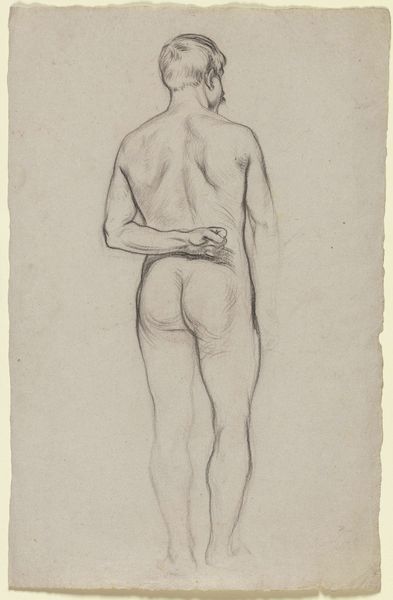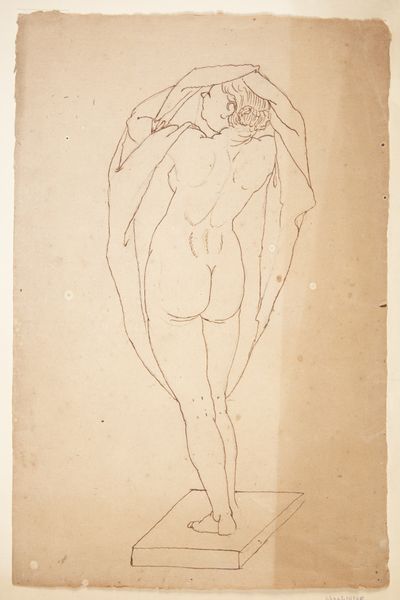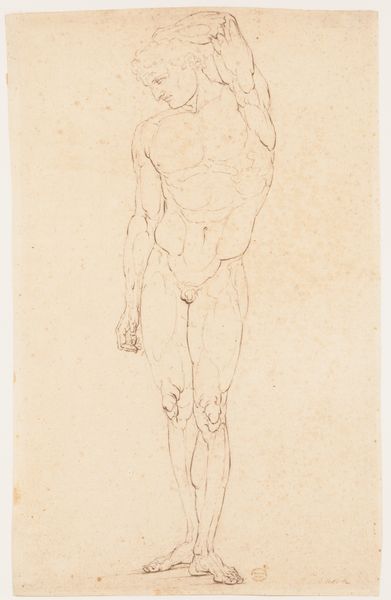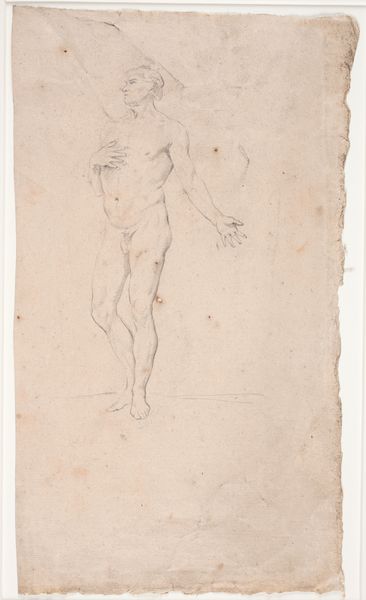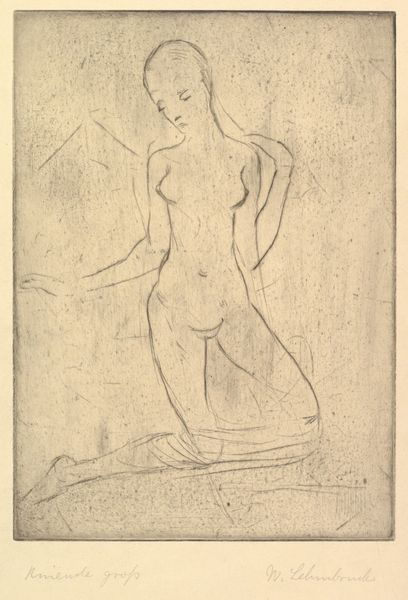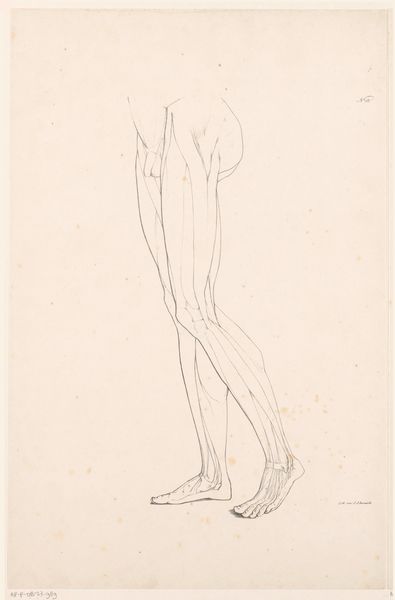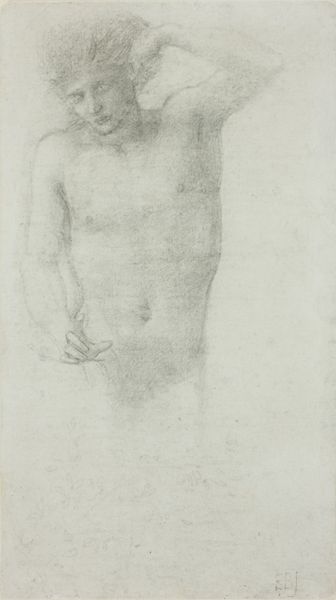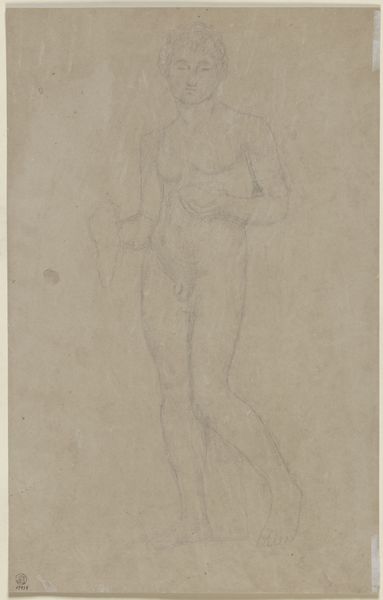
drawing, paper, pencil
#
portrait
#
drawing
#
16_19th-century
#
figuration
#
paper
#
romanticism
#
pencil
#
history-painting
#
nude
Copyright: Public Domain
Editor: Here we have Franz Pforr’s "Nude of a boy’s back," created around 1810 or 1811, rendered in pencil on paper. It feels very academic, focused on form, but there's also a vulnerability to the figure that's striking. How do you interpret this work, considering its historical context? Curator: The political and cultural backdrop to this drawing is fascinating. Pforr was part of the Brotherhood of St. Luke, later known as the Nazarenes, a group reacting against what they perceived as the decadence of academic art. They sought to revive honesty and spirituality, often drawing inspiration from the Middle Ages and early Renaissance. This nude, therefore, exists within that reformative impulse, challenging the established artistic institutions and their focus. Does the slight awkwardness of the pose challenge your understanding of ideal form? Editor: I suppose so, it's not a heroic figure. How did their break from the academy influence art's public role, its perception, at that time? Curator: The Nazarenes' emphasis on spirituality and idealized historical narratives created a shift in artistic taste and a new market. Think of how they promoted history painting, and drawings such as these would be shown as part of a process of education. Their influence pushed towards art with overt moral or religious messages. This resonated strongly within emerging nationalist sentiments in German-speaking lands during the early 19th century. Can you see how that appeal to historical "purity" might also be a kind of political statement? Editor: I see now; the Nazarenes helped to shape the conversation, defining not just what art *was*, but what it *should do* for society. Curator: Precisely. They positioned art as a force for cultural and, in a sense, moral renewal. Their style and subjects became almost a type of public virtue signaling, a move which greatly shifted patronage of the arts. Editor: I never thought about a drawing of a nude boy's back having so many layers of socio-political weight! Thanks, that really opened my eyes to the artwork's function within that era.
Comments
No comments
Be the first to comment and join the conversation on the ultimate creative platform.
